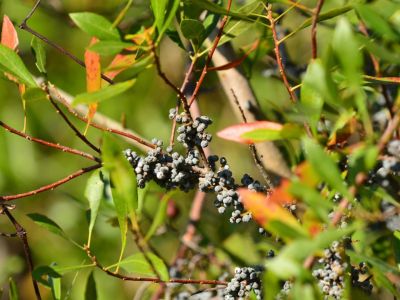Wax Myrtle Care Tips
Wax myrtle care involves fertilization and pruning for shape or pruning when limbs are damaged or split off by heavy ice and snow. Historically, leaves of the wax myrtle tree were used for fragrance and flammability when making candles. This fragrance, still used today, has earned the shrub a common name of southern bayberry. Wax myrtle often exhibits growth of 3 to 5 feet (1-1.5 m.) a year. As a shrub it has a rounded, narrow form and is attractive when limbed up for use as a small tree. Use the wax myrtle tree in mixed shrub borders and as shade for the deck or patio. When growing wax myrtle, avoid planting annuals and perennials around the roots of this plant. Root disturbance or injury results in numerous suckers that must be pruned to keep the plant healthy and for proper wax myrtle care. Fruit of the wax myrtle tree is an important source of food for birds in the winter. Grayish white clusters of fruit with a bluish, waxy coating remain on the plant throughout the winter in USDA zones 7 to 9, where the growing wax myrtle is hardy. Include the wax myrtle tree in your natural or wildlife friendly area. Flowers appear in spring; they are small with a greenish tint.
How to Plant Wax Myrtle
Plant wax myrtle in a full sun to part sun area where roots will not be disturbed. This plant is salt tolerant and takes sea spray well, making it an exceptional beach front planting. The wax myrtle is adaptable to a range of soils but prefers the soil to be moist. When growing wax myrtle, plant it where you can enjoy the bayberry fragrance emitting from the glossy leaves and berries.
